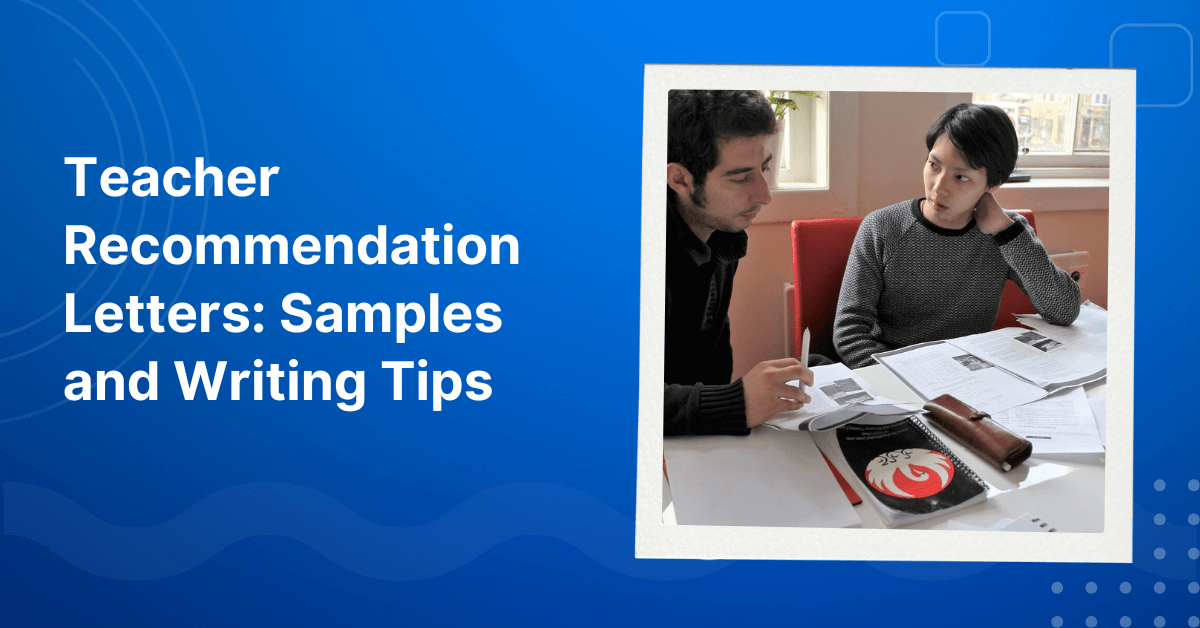For educators seeking to nurture a positive and effective learning environment, mastering the art of classroom management is essential. To support teachers in this endeavor, we have compiled a list of over 21 best classroom management books for teachers. These carefully selected resources encompass a wealth of expert insights, practical strategies, and proven techniques to help teachers establish and maintain a well-managed classroom. Let VTJ explore this curated collection and unlock a wealth of knowledge that will empower you to create an engaging learning environment for your students.
>>>Read more: 22+ SMART Teacher Goals Examples in 2023
The First Days of School: How to Be an Effective Teacher (By Harry Wong)
“The First Days of School: How to Be an Effective Teacher” by Harry Wong is a practical and renowned guide for educators, particularly those new to teaching. The book offers valuable classroom management strategies to establish a positive and productive classroom environment from the start of the school year. It emphasizes proactive classroom management, building strong teacher-student relationships, and maximizing instructional time.
>>>Read more: How to Teach Critical Thinking Skills to Students
Teaching with Love and Logic Taking Control of the Classroom (By Jim Fay & Charles Fay)
“Teaching with Love and Logic: Taking Control of the Classroom” by Jim Fay and Charles Fay is one of the best classroom management books. This book offers effective classroom management strategies for educators to establish a positive and productive learning environment. The book emphasizes the importance of using love and empathy while maintaining firm boundaries and logical consequences. It provides practical techniques to handle challenging behaviors, decision-making skills in students and promotes a sense of ownership and accountability.
>>>Read more: What is Experiential Learning? How Does It Work?
Classroom Management That Works (By Robert J. Marzano)
“Classroom Management That Works” by Robert J. Marzano is a practical guide that offers educators effective strategies to establish an orderly classroom environment. Marzano emphasizes proactive approaches to discipline, fostering a culture of mutual respect and responsibility. By focusing on clear expectations, effective communication, and consistent routines, teachers can create an optimal setting.
>>>Read more: Guide on How to Teach Vocabulary Effectively for Teachers
Teach Like a Champion 3.0 (By Doug Lemov)
“Teach Like a Champion 3.0” by Doug Lemov is a highly acclaimed educational guide that equips teachers with practical strategies to enhance their instructional skills. Through a series of actionable techniques, the book emphasizes the importance of high behavioral expectations, active student engagement, and precise feedback. By employing a strong teacher voice, creating smooth lesson transitions, and encouraging critical thinking, educators can maximize classroom effectiveness and promote student success.
>>>Read more: 120+ High and Middle School Debate Topics for Students
Setting Limits in the Classroom: How to Move Beyond the Dance of Discipline in the Classroom (By Jim Fay)
“Setting Limits in the Classroom: How to Move Beyond the Dance of Discipline in the Classroom” emphasizes the importance of building respectful relationships with students and shifting the focus from punishment to teaching responsibility. The book provides valuable insights into understanding student behavior, implementing logical consequences, and fostering intrinsic motivation. With real-life examples and step-by-step techniques, Fay equips educators with the tools to address challenging behaviors, promote self-discipline, and cultivate a cooperative classroom atmosphere.
>>>Read more: How To Write a Curriculum in 8 Steps: A Complete Guide
Have you Filled a Bucket Today? A Guide to Daily Happiness for Kids (By Carol McCloud)
“Have You Filled a Bucket Today? A Guide to Daily Happiness for Kids” by Carol McCloud is a heartwarming and insightful book that teaches children the importance of kindness, empathy, and positive behavior. Through the metaphor of an invisible bucket that everyone carries, McCloud encourages children to understand that their words and actions can either fill someone’s bucket with love, kindness, and happiness, or empty it with negativity and unkindness. The book emphasizes the power of small acts of kindness and how they can make a significant impact on others’ lives as well as their own. With colorful illustrations and relatable examples, McCloud provides children with practical tools to cultivate a caring and compassionate mindset.
>>>Read more: Why do you want to be a Teacher? 15+ Example Answers
The Daily 5 (By Gail Boushey)
The book introduces five key components—Read to Self, Read to Someone, Listen to Reading, Word Work, and Work on Writing—that form the foundation of daily literacy instruction. Boushey emphasizes the importance of building a culture of independence and student ownership in the classroom, where students engage in purposeful and meaningful literacy activities. By providing clear guidelines, strategies, and management techniques, the book helps teachers create a balanced literacy routine that caters to individual needs and promotes a love for reading and writing.
>>>Read more: 4 Types of Learning Styles: How to Use VARK Model in Teaching
Conscious Discipline: 7 Basic Skills of Brain Smart Classroom Management (By Dr. Becky A. Bailey)
Drawing on neuroscience and social-emotional learning, the book introduces seven fundamental skills that help teachers foster self-regulation and emotional intelligence in both themselves and their students. Dr. Bailey emphasizes the importance of building strong connections and relationships with students, teaching them conflict resolution and problem-solving skills, and creating a culture of mutual respect and empathy. The book provides practical strategies and techniques to address challenging behaviors, reduce classroom disruptions, and promote a sense of belonging and cooperation among students.
>>>Read more: How To Write a Lesson Plan in 6 Steps: The Complete Guide
Beyond Discipline: From Compliance to Community (By Alfie Kohn)
“Beyond Discipline: From Compliance to Community” by Alfie Kohn is a thought-provoking book that challenges traditional approaches to discipline in schools and advocates for a shift towards a more collaborative and community-oriented approach. The book encourages educators to move beyond a focus on compliance and obedience and instead focus on building meaningful connections with students and involving them in the decision-making process.
>>>Read more: Teacher Burnout: Causes, Signs, and How to Avoid It
Tools for Teaching: Discipline, Instruction, Motivation. Primary Prevention of Classroom Discipline Problems (By Fred Jones)
In this book, Fred Jones emphasizes the importance of primary prevention, providing teachers with proactive strategies to prevent discipline issues before they arise. From establishing clear expectations and routines to promoting active engagement and fostering intrinsic motivation, the book equips teachers with a wide array of tools and techniques to enhance their instructional effectiveness and manage student behavior.
>>>Read more: 20+ Effective Classroom Management Strategies and Techniques
Lost and Found: Helping Behaviorally Challenging Students (And, While You’re at It, All the Others) (By Rose W. Greene)
“Lost and Found: Helping Behaviorally Challenging Students (And, While You’re at It, All the Others)” by Rose W. Greene is a compassionate and insightful guide for educators to understand and support behaviorally challenging students in the classroom. The book goes beyond traditional disciplinary approaches and delves into the underlying causes of challenging behaviors, offering practical strategies to address them effectively.
>>>Read more: 40+ Preschool Teacher Interview Questions (+Answers)
Discipline Without Stress, Punishments or Rewards (By Marvin Marshall)
“Discipline Without Stress, Punishments or Rewards” by Marvin Marshall offers a refreshing perspective on classroom management. Marshall advocates for a proactive and relationship-based approach to discipline, focusing on teaching responsible behavior and self-regulation. The book emphasizes building strong teacher-student connections and promoting intrinsic motivation in students, rather than relying on punitive measures or rewards.
>>>Read more: What Is a Montessori School? Pros and Cons of Montessori School
Positive Discipline in the Classroom (By Jane Nelson)
“Positive Discipline in the Classroom” by Jane Nelson provides a comprehensive guide to establishing a positive and respectful classroom culture. The book presents a clear and consistent guidelines, educators learn how to set boundaries while still valuing students’ autonomy and dignity. By promoting problem-solving skills and communication, the book helps teachers build strong teacher-student relationships and instill a sense of responsibility and self-discipline in students, leading to a more supportive and conducive learning atmosphere.
>>>Read more: Practical Tips to Deal with Negative Teacher
Punished by Rewards: The Trouble with Gold Stars, Incentive Plans, A’s, Praise and Other Bribes (By Alfie Kohn)
Alfie Kohn challenges the conventional use of extrinsic motivators in the educational system. The book argues that rewards and praises can undermine intrinsic motivation and hinder long-term learning. Kohn presents compelling research and examples to highlight the negative effects of using external incentives in the classroom. Educators are encouraged to foster students’ internal drive and passion for learning, promoting genuine engagement and a love for knowledge without relying on bribes or rewards.
>>>Read more: What is TPR (Total Physical Response)? How can I use it?
The First Six Weeks of School (By Paula Denton)
The book emphasizes the significance of establishing routines, setting clear expectations, and building a sense of community in the classroom. By providing comprehensive lesson plans and activities, Denton helps teachers establish a strong foundation for the rest of the school year, ensuring a smooth transition and a successful learning experience for both students and educators.
>>>Read more: 15+ Ways to build confidence in your ESL students
Running the Room: The Teacher’s Guide to Behaviour (By Tom Bennett)
The book addresses the challenges teachers may encounter in handling disruptive or challenging behaviors and offers practical solutions. From creating a positive learning climate to implementing consistent consequences, Bennett equips educators with tools to maintain control and promote a focused learning environment.
>>>Read more: 14 Types of teaching methods for an effective lesson
The Power of Our Words: Teacher Language That Helps Children Learn (By Paula Denton)
The book explores how educators’ words can shape students’ self-perception and motivation. By using constructive and affirming language, teachers can nurture students’ confidence and willingness to participate actively in their education. Denton provides practical examples and exercises to help teachers become more conscious of their language and its impact, ultimately enhancing the learning experience for all students.
>>>Read more: What is blended learning? Types, Examples & Benefits?
Better Learning Through Structured Teaching: A Framework for the Gradual Release of Responsibility (By Douglas Fisher)
The book focuses on gradually transitioning the responsibility of learning from the teacher to the students, allowing them to become independent and capable learners. Fisher offers a step-by-step approach to lesson design, including modeling, guided practice, collaborative learning, and independent application.
>>>Read more: Teacher Strengths and Weaknesses: How to Answer?
Discipline Strategies for the Classroom; Working with Students (By Ruby K. Payne)
The book provides a comprehensive overview of discipline strategies, emphasizing the importance of considering students’ diverse backgrounds and experiences. Payne offers practical techniques for building positive relationships with students and implementing effective behavior management strategies. By tailoring interventions to individual student needs, educators can create a more inclusive and supportive classroom environment.
>>>Read more: Different types of institutions to teach English in Vietnam
The Teacher’s Pocket Guide for Effective Classroom Management (By Kim Knoster)
The book covers a wide range of topics, from setting expectations and building rapport with students to handling disruptive behaviors and promoting a positive learning climate. Through easy-to-implement tips and strategies, Knoster helps educators maintain order and engage students, providing a useful tool for both new and experienced teachers looking to enhance their classroom management skills.
>>>Read more: 40+ ESL Teacher Interview Questions & Answers
Whole Brain Teaching (By Chris Biffle)
“Whole Brain Teaching” by Chris Biffle introduces a comprehensive system that incorporates gestures, call-and-response techniques, and active engagement to enhance student focus and retention. Biffle’s method encourages teachers to create an energetic and dynamic classroom environment where students are excited to learn and participate.
>>>Read more: Create a Winning CV for Teachers in 2023 (Templates & Examples)
The Classroom Management Secret (By Michael Linsin)
“The Classroom Management Secret” by Michael Linsin offers practical and straightforward strategies for managing behavior and maintaining a positive learning environment. The book emphasizes the importance of consistency, clear expectations, and fair consequences to establish a structured and well-behaved classroom. Linsin provides guidance on handling various behavior challenges and maintaining a sense of calm authority in the classroom.
>>>Read more: Teacher Cover Letter Examples and Templates for Any Teaching Position
Remember, effective classroom management is not just about imposing rules but rather about cultivating a supportive and encouraging environment where students can thrive academically and emotionally. These classroom management books will illuminate the path towards becoming more adept and empathetic teachers.
FAQ
What are the 3 C’s of classroom management?
=> The 3 C’s of classroom management are: Communication, Consistency, Caring
What are the big 5 in classroom management?
=> The Big 5 in classroom management are: Clear Expectations, Consequences, Consistency, Caring Relationships, Calm and Respectful Environment.
Are you facing difficulties in finding and securing teaching positions in Vietnam? Are visa procedures causing you trouble? Feeling overwhelmed and directionless upon your arrival in Vietnam for teaching assignments? Don’t worry, VTJ’s English Teaching Placement in Vietnam (EPIV) Program 2024 provides comprehensive support to solve ALL the matters.
👉👉👉 Click HERE to request free consultation




